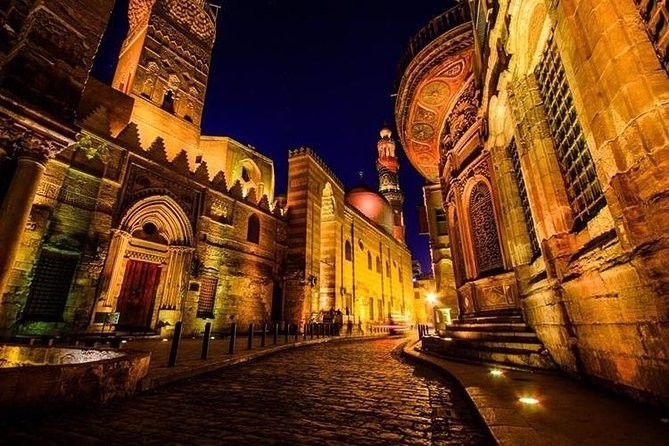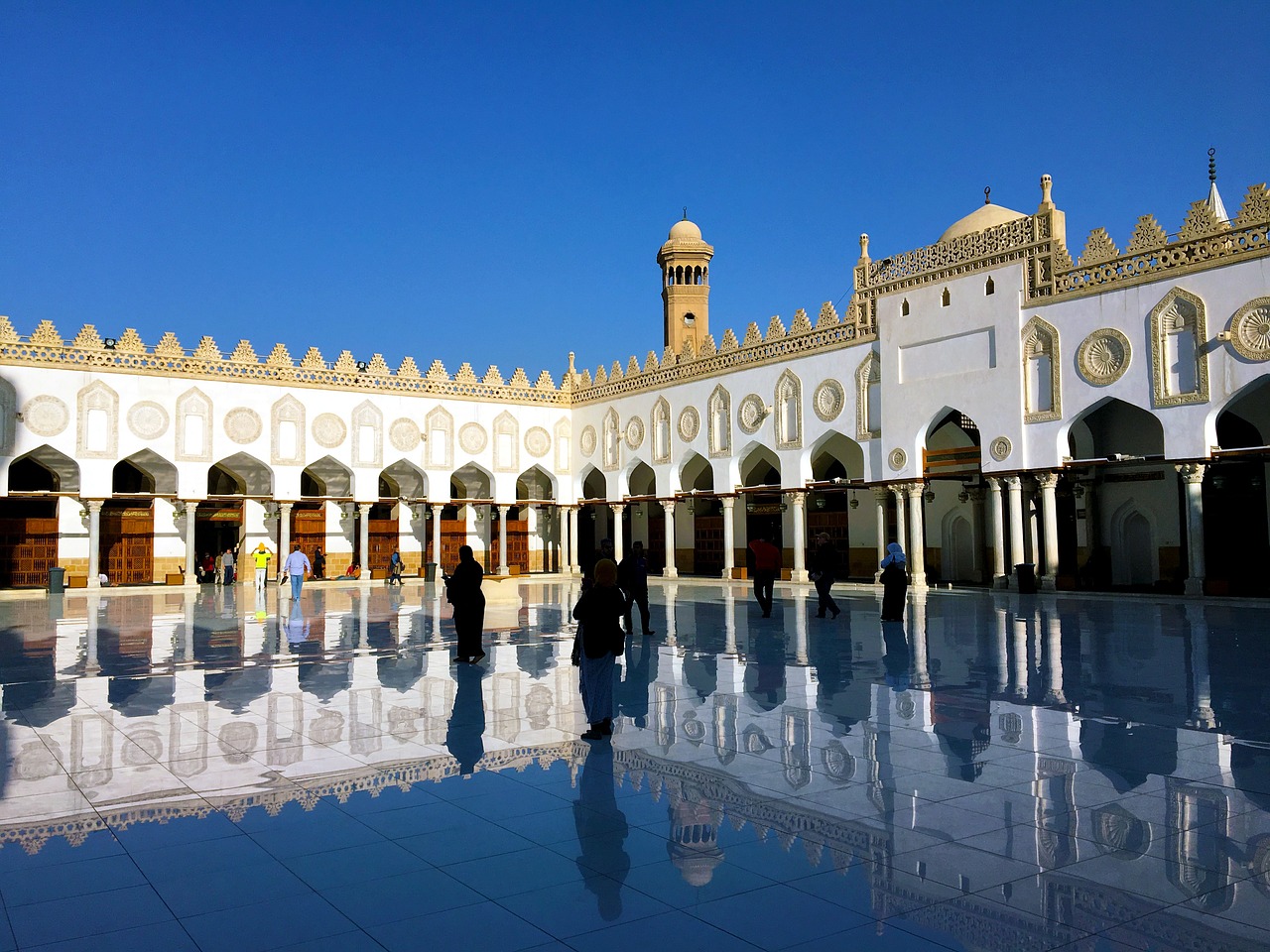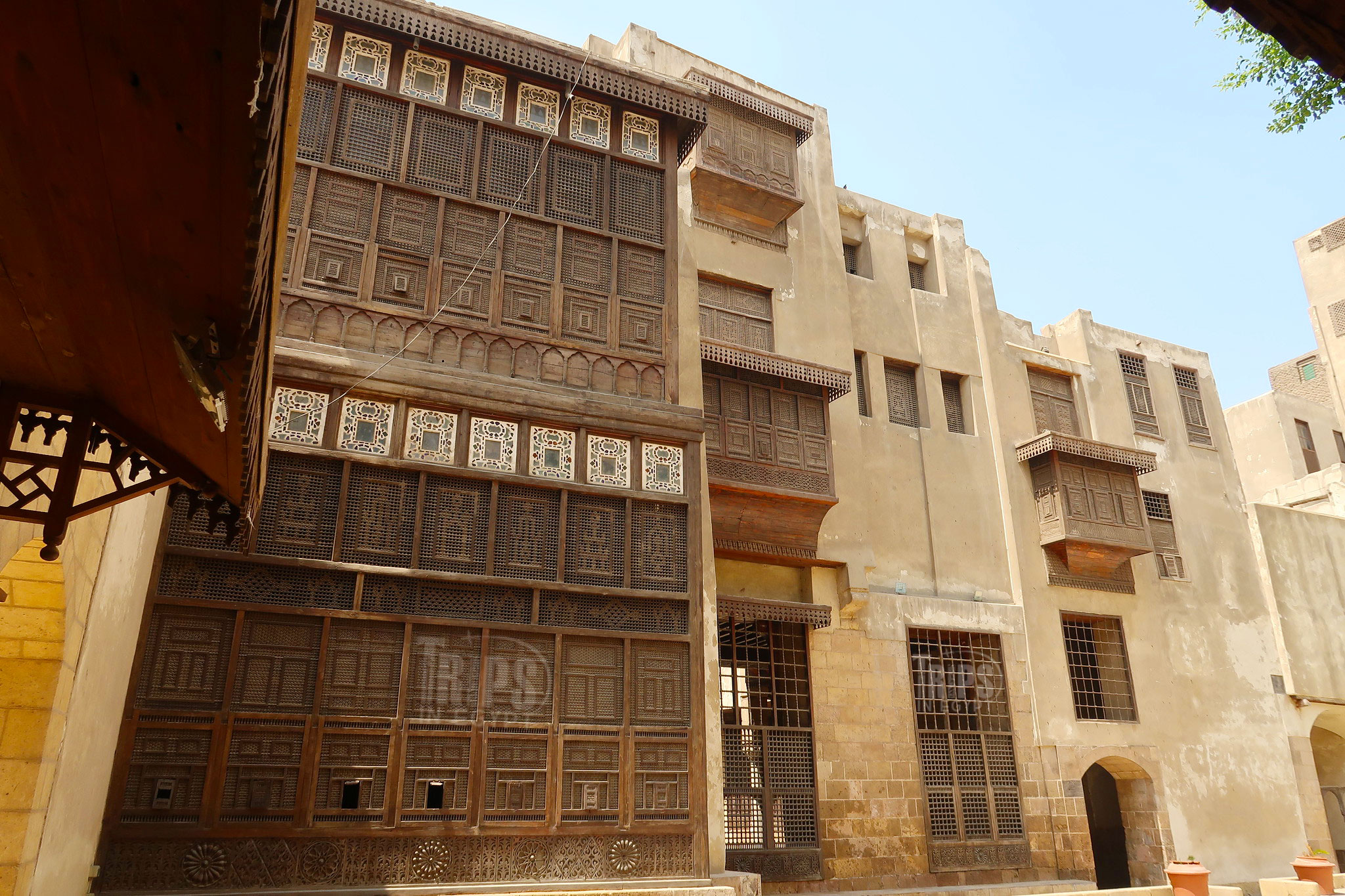Secrets of Cairo: Unveiling Treasures of Al-Mu'izz Ldin Allah Street

Welcome to the Al-Mu'izz Ldin Allah Street guided tour in Cairo! This tour is going to be a fantastic experience for you. As you meander through the ancient streets of Cairo, you will witness the beauty of Islamic architecture, delve into the rich culture and history of Egypt, and experience the city's lively atmosphere.
Background and significance of Al-Mu'izz Ldin Allah Street
Al-Mu'izz Ldin Allah Street is one of the oldest streets in Cairo, stretching for more than one kilometre and containing many Islamic architectural landmarks. The street was built back in the Fatimid era, around 969 AD. During this era, Cairo was established as the capital of the Islamic empire and the Al-Azhar Mosque was founded. The street was designed to connect the new dynasty's palace with the new mosque.
This street has been important in Cairo's commercial and religious life over the centuries. During medieval times, the street was lined with many shops, stalls, and souqs that sold all kinds of goods. Today, the street remains a cultural and religious activity hub in Cairo.
Overview of what to expect on the guided tour
The guided tour of Al-Mu'izz Ldin Allah Street will allow you to witness some breathtaking Islamic architecture dating back to the medieval ages. You will also experience the vibrant atmosphere of Cairo's most popular street.
During the tour, you will visit several historical sites along the street, including the Al-Hakim bi-Amr Allah Mosque, the Beit al-Suhaymi, the Al-Azhar Mosque, and many others. Each site has its unique story and significance, which our knowledgeable guide will share with you.
So, wear comfortable walking shoes, bring your camera, and be ready for an unforgettable experience as you explore Al-Mu'izz Ldin Allah Street!
Historical Overview
History of Al-Mu'izz Ldin Allah Street and its significance to Cairo's history
As mentioned earlier, Al-Mu'izz Ldin Allah Street was built during the Fatimid era, around 969 AD. It was designed to connect the new dynasty's palace with the newly constructed Al-Azhar Mosque. The street played a crucial role in Cairo's commercial and religious activities during the medieval times. It had numerous shops, stalls, and souqs selling various goods. Today, the street remains a centre of cultural and religious activities in Cairo.
Prominent buildings and structures along the street
You will visit several historic sites along the street during the guided tour. Some prominent ones include the Al-Hakim bi-Amr Allah Mosque, Beit al-Suhaymi, Al-Azhar Mosque, and many more. Each site has its unique story and significance, which our knowledgeable guide will share. You will also witness breathtaking Islamic architecture dating back to the medieval ages.
Get ready for an unforgettable experience as you explore Al-Mu'izz Ldin Allah Street with us. Wear comfortable walking shoes, bring your camera, and immerse yourself in Egypt's rich culture and history.

Al-Hakim Mosque and the Jewish Quarter
Overview and history of Al-Hakim Mosque
The Al-Hakim bi-Amr Allah Mosque is near the heart of Old Cairo, along Al-Mu'izz Ldin Allah Street. It was built in the 11th century by Fatimid Caliph Al-Hakim, who was known for his unique personality and fierce religious views. The mosque has undergone several renovations over the centuries, but its original design and architecture remain intact.
Prominence of the Jewish Quarter in Cairo's history and culture
As we continue our tour of Al-Mu'izz Ldin Allah Street, we'll also visit the Jewish Quarter, which sits adjacent to the mosque. The area has a rich history, dating back to the 10th century when Jewish traders settled in Cairo. The quarter housed several synagogues and was a hub for Jewish culture and commerce during medieval times. The Jewish community is much smaller today, but the quarter remains an important part of Cairo's cultural heritage.
Thanks for joining us on this journey. We hope you've gained a deeper appreciation for the history and significance of Al-Mu'izz Ldin Allah Street, the Al-Hakim bi-Amr Allah Mosque and the Jewish Quarter. Don't forget to wear comfy shoes and bring your camera on future adventures.

Al-Azhar Mosque
Historical significance and role of Al-Azhar Mosque in Cairo's history and culture
Al-Azhar Mosque, located in the heart of Islamic Cairo, is one of the world's oldest and most prestigious mosques. It was established in the 10th century as a centre for Islamic learning and has played a vital role in shaping Cairo's historical and cultural identity. The mosque has served as a platform for spreading Islamic teachings and values and promoting intellectual and philosophical discussions among scholars and students.
Unique features of the mosque's architecture and design
Al-Azhar Mosque is famous for its stunning architecture and intricate design. The mosque boasts beautiful white marble, intricate wooden carvings, a large courtyard, and soaring minarets. The mosque's design draws from various architectural styles, including Mamluk, Ottoman, and modern influences.
Thanks for joining us as we explore the grandeur of Al-Azhar Mosque. Don't forget to take in the surrounding bazaars and shops, selling everything from spices to souvenirs. Until next time, happy exploring!

Bayt Al-Suhaymi
History and cultural significance of the Bayt Al-Suhaymi house
Bayt Al-Suhaymi was built in 1648 as a residence for the wealthy Al-Suhaymi family. This exquisite building reflects the Ottoman style of architecture and is a testament to the cultural richness of Islamic Cairo. Over the years, it has been used as a guesthouse for important visitors to Cairo, such as King Farouk and the Indian independence leader Mahatma Gandhi.
Today, Bayt Al-Suhaymi is preserved as a museum, allowing visitors to step back into Cairo's captivating past. Explore the beautiful courtyards and rooms, each with its unique decor, and gain a glimpse into the social and cultural life of Cairo's elites during the Ottoman era.
Features of the building's architecture and design
Bayt Al-Suhaymi is famous for its intricate architectural design, which includes beautiful arches, ornate wooden details, and artistic tiling. The house features stunning Arabic calligraphy and geometric designs, reflecting the traditional art of Islamic Cairo.
One of the most impressive aspects of the house is its rooftop terrace, offering stunning views of Cairo's skyline. The terrace is also decorated with colourful mosaics, offering a peaceful retreat from the bustling city below.
Thank you for joining me on this journey through the Bayt Al-Suhaymi house. Don't forget to take in the beautiful gardens and fountains surrounding the building. Until next time, happy exploring!

Qalawun Complex
Hey there, my friend! Let's embark on a journey to explore the Qalawun Complex, a historical complex located in the heart of Cairo. Get ready to be amazed by its remarkable architecture and cultural significance.
Overview of the Qalawun Complex and its significance to Cairo's history and culture
The Qalawun Complex is a well-preserved architectural gem that serves as a testament to the cultural richness of Islamic Cairo. It was built in 1284 during the rule of Sultan Qalawun and is a product of the Mamluk era. The complex served as a public hospital and madrasa for students of Islamic theology. It also includes a mausoleum that houses the tombs of Sultan Qalawun and his family.
Features and unique aspects of the complex's architecture and design
The Qalawun Complex stands out for its intricate architectural design, reflecting the traditional style of Islamic Cairo. The building features decorative arches, ornately carved stonework, and intricate geometrical designs. The impressive black and white striped facade is a prominent feature of the complex. The complex also boasts a stunning central courtyard with colourful mosaics and beautiful calligraphy. One of the unique aspects of the complex is the dome that tops the mausoleum, considered one of the most impressive domes in Islamic architecture.
Thank you for joining me on this journey through the Qalawun Complex. Take a moment to appreciate the complex's courtyard's peaceful ambience and its architecture's detailed craftsmanship. Until next time, happy exploring!

Sabil-Kuttab of Katkhuda
Are you ready for another adventure? Today, we will explore the Sabil-Kuttab of Katkhuda, a historical building in Cairo. Are you excited to learn about its intriguing history and amazing architecture? Let's get started!
Overview and history of the Sabil-Kuttab of Katkhuda
The Sabil-Kuttab of Katkhuda is a beautiful and unique building constructed in 1744 during the Ottoman era. It was built by a wealthy and respected individual, Sheikh Ahmed Katkhuda, who believed in education and providing for his community. The Sabil-Kuttab was used to provide water for the public and educate young boys in Quranic studies, Arabic, and calligraphy.
Significance of the building's design and architecture
The Sabil-Kuttab of Katkhuda is a true masterpiece of Islamic architecture. Its unique design includes two floors, the first as a sabil (water dispenser) and the second as a kuttab (Quranic school). The building displays intricate carvings, colourful tiles, and beautiful calligraphy on its facade. The interior is just as remarkable, with detailed wooden screens, stained glass windows, and ornate decorations.
One of the most interesting features of the Sabil-Kuttab of Katkhuda is its innovative engineering. The sabil is designed to catch rainwater from the roof and collect it in a large underground cistern, which would then dispense water to the public. This system was considered very advanced and was a crucial development to combat Egypt's scarce water resources.
Thanks for joining me on this tour of the Sabil-Kuttab of Katkhuda. I hope you enjoyed learning about its unique history and its beautiful architecture. Happy exploring!

Qaa El Seidawiya
Are you ready for another exploration? Today, we will be delving into Qaa El Seidawiya, a historical site in Cairo. Join me as we discover the history and architecture of this fascinating building!
History and Cultural Significance of Qaa El Seidawiya
Qaa El Seidawiya was built in the 16th century during the Ottoman era. It was constructed by Seid El-Nahhas, a prominent Cairo figure known for his charitable works. The building served as a stopover for pilgrims travelling to Mecca, providing them food, water, and shelter before continuing their journey. Qaa El Seidawiya also played an important role in hosting Sufi ceremonies and other religious events.
Features and unique aspects of the building's architecture and design
The architecture of Qaa El Seidawiya is a beautiful blend of Ottoman and Mamluk styles. The building features a spacious courtyard with marble floors and an ornate fountain at its centre. The rooms surrounding the courtyard are adorned with intricate tilework, calligraphy, and woodcarvings. Visitors can also explore the building's rooftop, which offers stunning panoramic views of the surrounding area.
One unique feature of Qaa El Seidawiya is its intricate ventilation system, designed to keep the building cool in the hot Egyptian summers. The building's architects incorporated small openings in the walls and ceilings that created air currents, providing natural ventilation and a comfortable living space for the occupants.
That's all for now! I hope you enjoyed learning about Qaa El Seidawiya and its rich history. See you on our next adventure!

Recommendations for Further Exploration of Cairo's Historical Sites and Treasures
- The majestic Pyramids of Giza
- The iconic Sphinx
- The Egyptian Museum
- Medieval fortress Citadel of Saladin
- Coptic Cairo
- The Alabaster Mosque
We hope you enjoyed this guide and happy exploring!
